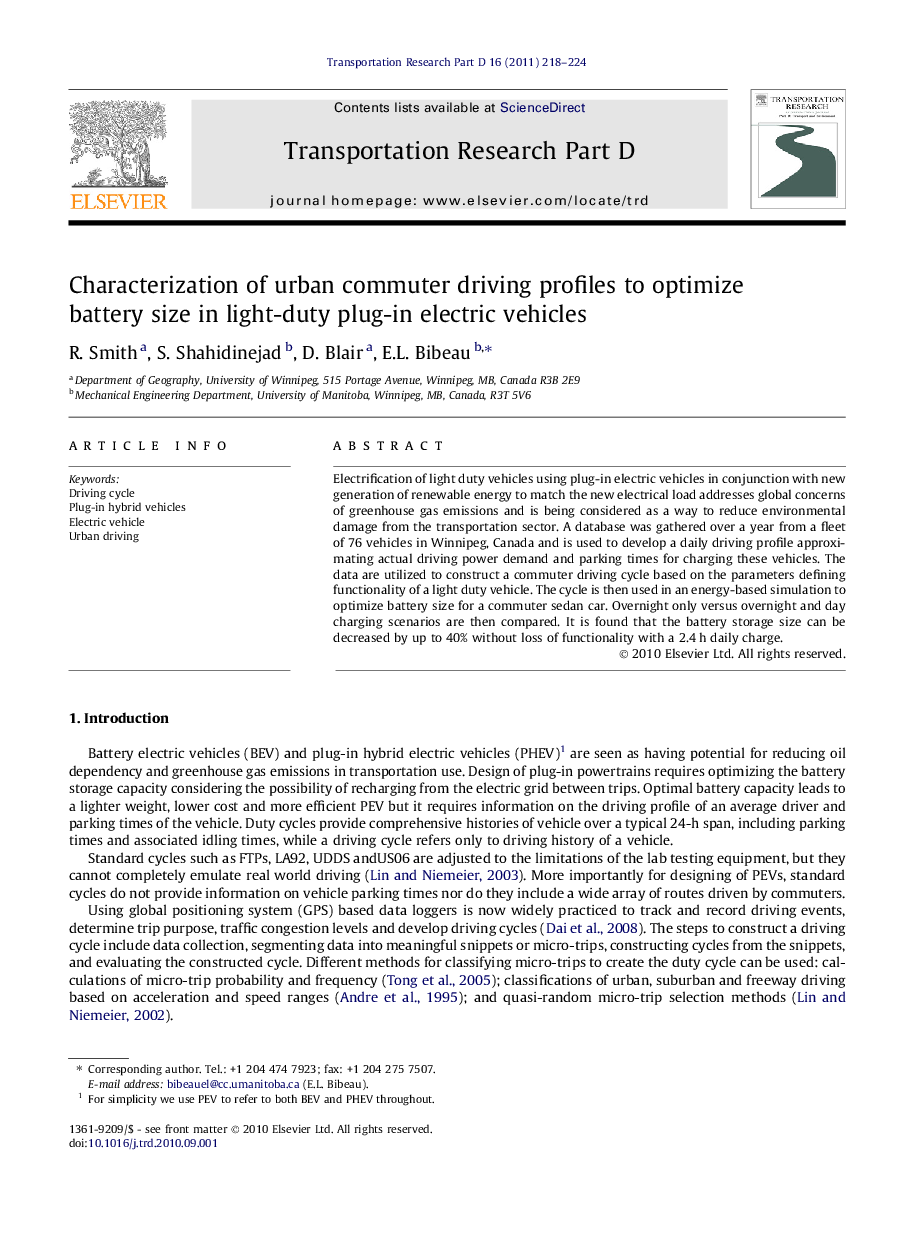| Article ID | Journal | Published Year | Pages | File Type |
|---|---|---|---|---|
| 1066239 | Transportation Research Part D: Transport and Environment | 2011 | 7 Pages |
Electrification of light duty vehicles using plug-in electric vehicles in conjunction with new generation of renewable energy to match the new electrical load addresses global concerns of greenhouse gas emissions and is being considered as a way to reduce environmental damage from the transportation sector. A database was gathered over a year from a fleet of 76 vehicles in Winnipeg, Canada and is used to develop a daily driving profile approximating actual driving power demand and parking times for charging these vehicles. The data are utilized to construct a commuter driving cycle based on the parameters defining functionality of a light duty vehicle. The cycle is then used in an energy-based simulation to optimize battery size for a commuter sedan car. Overnight only versus overnight and day charging scenarios are then compared. It is found that the battery storage size can be decreased by up to 40% without loss of functionality with a 2.4 h daily charge.
Research highlights► From a database of 76 car drivers in a Canadian city were monitored over a year using, a 24 h commuter duty cycle including parking times is developed to assesses efficient battery charging cycles. ► Parking times were broken down into 4 groups: home, work, commercial and other when considering charging options ► The driving cycle including parking times is compared assuming two battery chemistries and two types of charging for various battery pack sizes.
